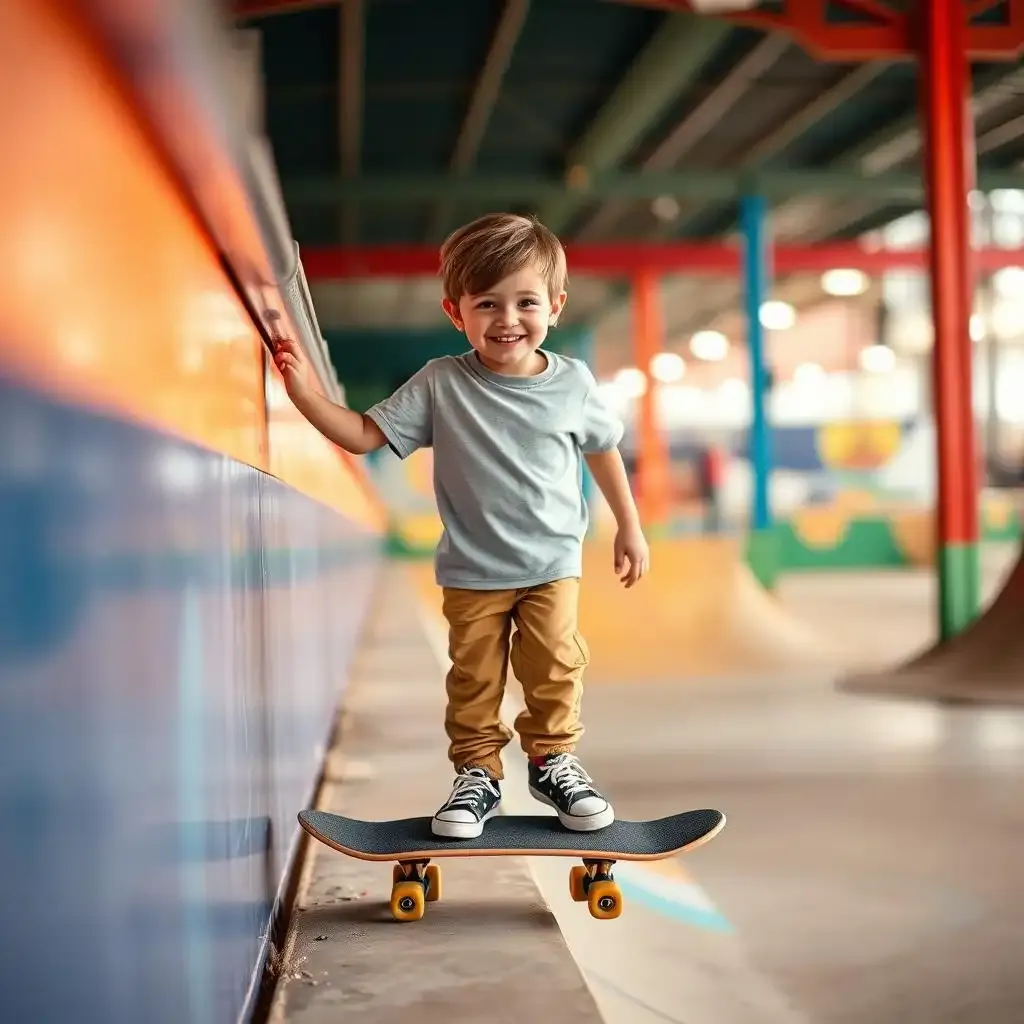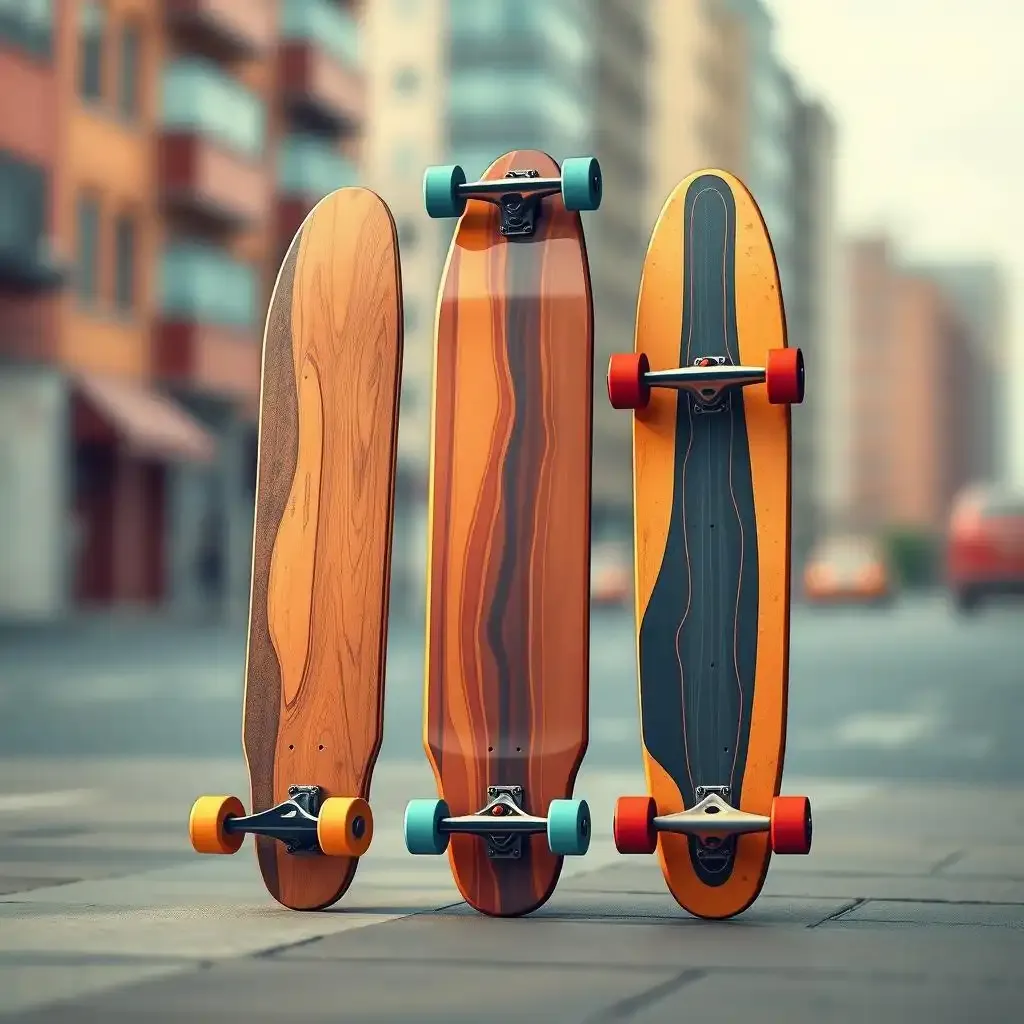Table of Contents
Want to start skateboarding? Awesome! Picking your first skateboard can feel like a tricky jump, but don't worry. This guide will help you find the perfect board to get rolling. We'll break down what skateboard is best for beginners, making it super easy to understand. Forget complicated stuff – we'll talk about sizes, different types of skateboards, and whether you should buy a ready-made one or build your own. Ready to learn what skateboard is best for beginners and start your skateboarding journey?
Topic | Key Information for Beginners |
|---|---|
Deck Width | 8 to 8.75 inches is a good starting point. Smaller riders (under 5ft) might prefer a slightly narrower deck. |
Complete Skateboards | Great for beginners! They come ready to ride, so you don't have to worry about picking out individual parts. |
Street Skateboards | Good for tricks and riding at skateparks. They're light and easy to flip. |
Cruiser Skateboards | Awesome for getting around! They have softer wheels for a smoother ride on sidewalks and roads. |
Longboards | Super stable and easy to learn on. Great for cruising and going downhill (once you're more experienced!). |
What Skateboard Size is Best for Beginners?
What Skateboard Size Is Best For Beginners
Picking the right size skateboard is like finding the perfect pair of shoes. Too big, and you'll be tripping over it. Too small, and you'll feel like you're balancing on a toothpick. For beginners, especially kids, size really matters. Think of it like this: a bigger board gives you more space for your feet, which means more balance. It's like having a bigger target to land on – way easier, right?
Now, when we talk about skateboard size, we're mostly talking about the width of the deck, that's the wooden part you stand on. Most beginner boards are between 8 and 8.75 inches wide. If you're on the smaller side, maybe under 5 feet tall, you might want to go a little smaller. It's all about what feels comfortable and easy to control. Imagine trying to do a kickflip on a board that's way too wide for your feet – not gonna happen! Speaking of tricks, are skateboards dangerous? It's a fair question!
Think of it like learning to ride a bike. You wouldn't start on a giant mountain bike if you're still wobbly on training wheels, would you? Same goes for skateboards. A smaller board can be easier to maneuver, especially when you're just learning to push and turn. But don't go too small! You still need enough room to plant your feet. It's a Goldilocks situation – you want it just right.
So, how do you figure out what's "just right"? A good starting point is to check out complete skateboards at your local skate shop. These are pre-built boards that are usually a good size for beginners. You can stand on a few different sizes and see how they feel under your feet. It's all about finding that sweet spot where you feel stable but can still move the board around. And remember, keeping your head safe is important, so maybe check out if can skateboard helmets be used for snowboarding too, just in case you hit the slopes later!
Complete Skateboards Versus Custom Setups for Beginners
Ready-Made Rigs: Jump Right In
Okay, so you're ready to roll! You've probably seen skateboards in shops, all shiny and new. Guess what? Many of these are "complete" skateboards. Think of it like buying a pre-built LEGO set. All the pieces are there, they fit together, and you can start playing right away. With a complete skateboard, the deck (the wooden part), the trucks (those metal things that hold the wheels), and the wheels themselves are already put together for you. It's super convenient, especially when you're just starting out. You don't have to worry about whether the parts will fit or if you're picking the right screws. Just grab it and go! But hey, are skateboards dangerous? Knowing the risks is part of the fun (and staying safe!).
For beginners, getting a complete skateboard is usually the best way to go. It saves you time, brainpower, and sometimes even money. Imagine trying to bake a cake for the first time and having to grind your own flour – sounds hard, right? Building a custom skateboard from scratch is kind of like that. There are so many different parts, and it can be confusing trying to figure out what works well together. With a complete, someone has already done the homework for you. They've picked out parts that are a good match for each other, so you can focus on learning to ride.
Building Your Own: Like a Skateboarding Scientist
Now, on the flip side, you could build your own skateboard! This is where you pick out each part separately: the deck, the trucks, the wheels, the bearings, even the little bolts. It's like being a skateboarding scientist, choosing exactly what you want. This can be really cool later on when you know what kind of riding you like and what feels best for you. Maybe you want super-fast wheels or extra-grippy trucks. Speaking of those metal bits, are skateboard trucks universal? It's a good question to ponder if you decide to get into the nitty-gritty of building.
But for your first board? Building your own can be a bit overwhelming. It's like trying to understand rocket science before you've even learned basic addition. There are tons of different brands, sizes, and types of each part, and it's easy to get lost in all the choices. Plus, if you pick the wrong parts, they might not even fit together! That's a bummer when you're itching to skate. So, while building your own board is awesome eventually, a complete skateboard is your shortcut to the skatepark when you're starting.
The Best of Both Worlds (For Later!)
Here's the cool thing: you don't have to choose between complete and custom forever. Think of your first complete skateboard as your trusty starter car. It gets you where you need to go and helps you learn the basics of driving (or in this case, skating!). Once you've been skating for a while, you'll start to figure out what you like and don't like about your board. Maybe you wish your wheels were a little softer, or you want a different design on your deck. That's when you can start swapping out parts and customizing your ride.
Complete Skateboards | Custom Skateboards |
|---|---|
Ready to ride right away | You choose each individual part |
Easier for beginners | More personalized |
Often more affordable to start | Can be more expensive |
So, for now, don't sweat the custom builds too much. Get yourself a solid complete skateboard and focus on the fun part: learning to skate! You can always upgrade and personalize your setup later. The most important thing is to get rolling and see if skateboarding is something you really enjoy. Who knows, maybe one day you'll be the skateboarding scientist, building the ultimate custom board. But for now, let's get you on a board and moving!
Finding the Best Skateboard for Beginners: Street vs. Cruiser vs. Longboard
Finding The Best Skateboard For Beginners Street Vs Cruiser Vs Longboard
Street Skateboards: The Trick Machine
Okay, so you're picturing a skateboard, right? You're probably thinking of what we call a "street" skateboard. These are the ones you see people doing ollies and kickflips on. Think of them like the sports cars of the skateboard world – they're built for quick moves and tricks. They've got a pretty flat deck that curves up at both ends (that's the nose and tail), which helps you pop it off the ground. The wheels are usually smaller and harder, which makes them roll fast on smooth surfaces like skateparks. If you dream of grinding rails and flying through the air, a street skateboard might be your jam. But hold on, are skateboards dangerous? It's good to know before you start trying those cool tricks!
Cruiser Skateboards: Your Smooth Ride
Now, imagine you just want to cruise around the neighborhood, maybe go to the store or meet up with friends. That's where cruiser skateboards come in. Think of them like a comfy bicycle compared to a race bike. They often have a wider deck than street boards and softer, bigger wheels. These softer wheels roll over cracks and bumps much easier, making for a smoother ride. It’s like the difference between driving a monster truck over potholes and trying it in a tiny sports car – way less bumpy! You can still do some tricks on a cruiser, but they're really built for getting from point A to point B in style.
Longboards: The Easy Glider
Finally, we've got longboards. These are, well, longer! Imagine a surfboard, but on wheels. Longboards are super stable, which makes them awesome for beginners. It’s like learning to walk with really wide shoes – you're less likely to wobble. They're great for cruising longer distances, going downhill (once you get good!), or just feeling like you're gliding on pavement. Think about those scenic boardwalks by the beach – you often see people cruising on longboards there. Plus, if you're wondering, skateboard helmets can be used for snowboarding, so you can even use some of the gear for other cool stuff!
Ready to Roll: Your Beginner Skateboard Progression
So, you've learned about sizes, complete setups, and the different kinds of skateboards. Choosing your first board is a big step, and hopefully, you feel more confident now. Remember, the absolute best skateboard for beginners is the one that feels right for you and gets you excited to skate. Don't be afraid to try different things and have fun while you're learning. Now get out there and start rolling!